In just two short weeks, the students have learned more about the geology of the Turkana Basin than any of them may have expected. Little did they know that it would prepare them for their future modules, teaching them to be more aware of their surroundings and exactly what type of environment to look for fossils in!
As we reached the end of the module, concepts and ideas were being connected and students were beginning to understand how geology is much more than just studying rocks. They began to see how geology is understanding your surroundings, investigating what environments once existed, and supplying finer details to what actually happened millions of years ago. With that, Professor Martin had guest lecturer Dr. Greg Henkes introduce the students to another important field in geosciences- stable isotopes! Dr. Henkes is a stable isotope geochemist who has been studying paleoclimates, diagenesis of sedimentary rocks and marine biogeochemistry for many years now. After learning how to reconstruct past environments through studying sedimentology, stratigraphy and cores, Dr. Henkes was the perfect guest to show the students that there are different methodologies that can supply them with similar conclusions and further support.
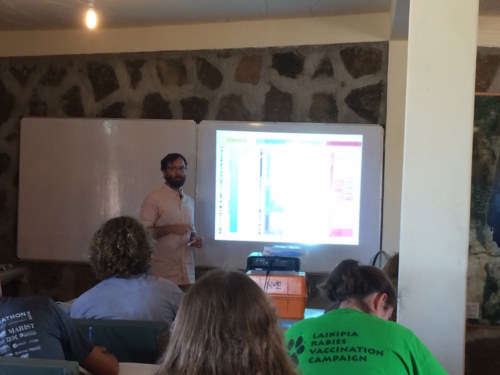
Dr. Henkes gives a lecture on paleoenvironments and isotopes!
Dr. Henkes discussed the importance of stable isotopes and how geologists use isotopic analyses when reconstructing hominin diets, the water cycle, climate changes such as aridity or shifts in paleoecology such as woodlands to grasslands. An isotope is when two or more forms of a chemical element contain equal number of protons but different numbers of neutrons in their nuclei. Unlike unstable/radioactive isotopes, a stable isotope will not decay into other elements. In fact, they track the flow of elements such as oxygen and carbon throughout ecosystems and certain types of isotopic ratios can be preserved in waters, minerals, plants and animals. With that, geochemists will look for evidence of these different ratios recorded in carbonate shells, ice cores, teeth or even sediment. It is just another way to better understand what was actually happening millions of years ago! Below is an example of what geochemists will compile using carbon isotope ratios.
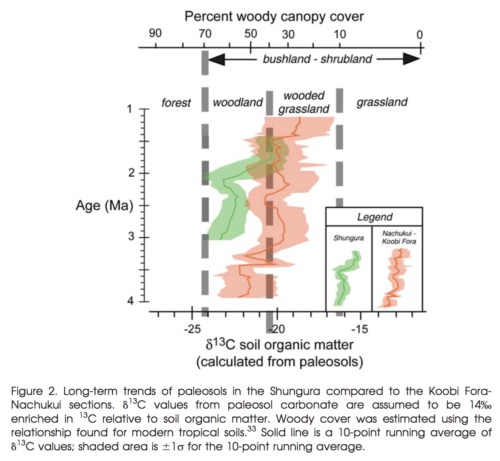
Cerling et al. 2011
To tie together what the students have learned and to transition into a fossil hunter’s way of thinking, the students had one last project to complete. Now that they understood how to study past environments through multiple methods, it was time to take it one step further. The project consisted of investigating a significant trace in the modern environment, trying to better understand the relationship of the trace to a tracemaker, variability of the trace in different environments, and the preservability of the trace as a future trace fossil. A trace fossil, also referred to as an ichnofossil, is an imprint or mark (track, footprint, burrows) that was left by an organism and preserves a specific behavior. Trace fossils are extremely important to identify and understand in the field because of what they can tell us about past behaviors and even past environments. With that, the students quickly transformed into detectives, searching high and low for the best trace to investigate. Below are pictures of the students presenting their finds covering topics involving goat and human tracks, mole rat burrows and even rhizoliths.
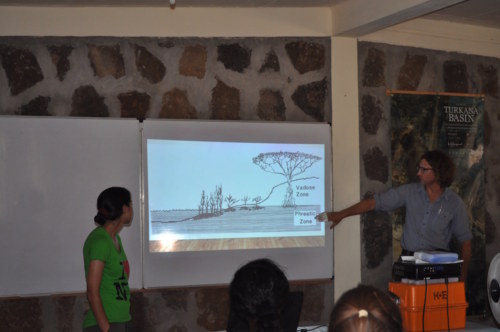
Carla and Jon discuss the ideal environments for their trace fossil to be preserved in
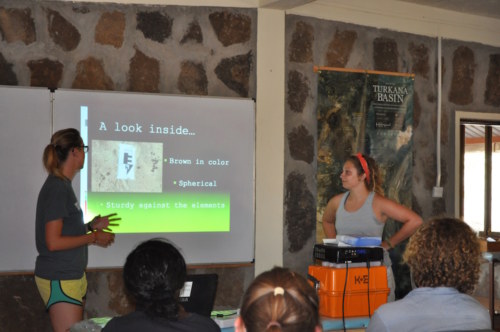
Danielle and Kathryn try to figure out who their tracemaker is!
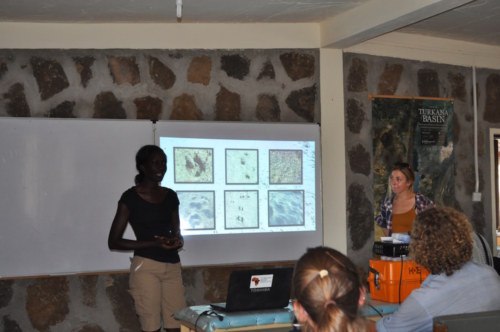
Esther and Emily show the different substrates their tracks were found in
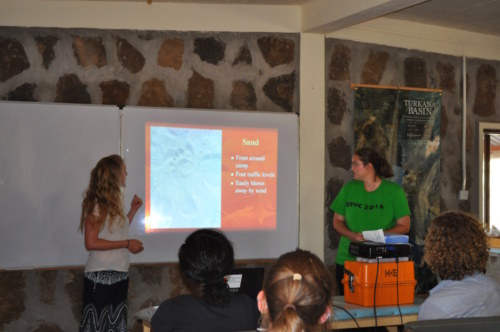
Natalie and Morgan explain how sand is not an ideal environment to preserve a trace
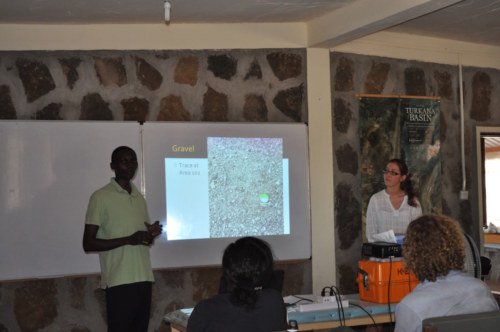
Toby and Millie followed the trace left by the lorry!
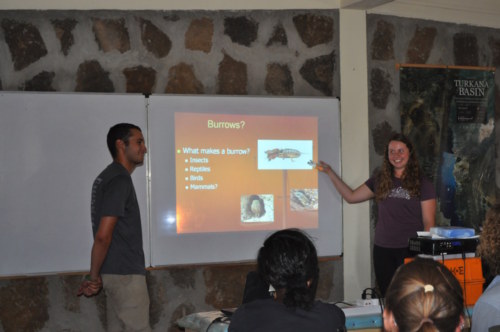
Yvette and Max were excited to find that their tracemaker was a mole rat!
Unfortunately, the geology module came to an end and we had to say goodbye to Dr. Henkes and Dr. Davis. Because the students were so grateful for all their help throughout the module they made them thank you cards!
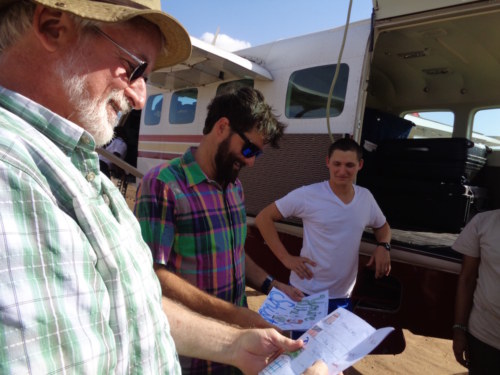
Dr. Davis and Dr. Henkes are happy to get such thoughtful cards!
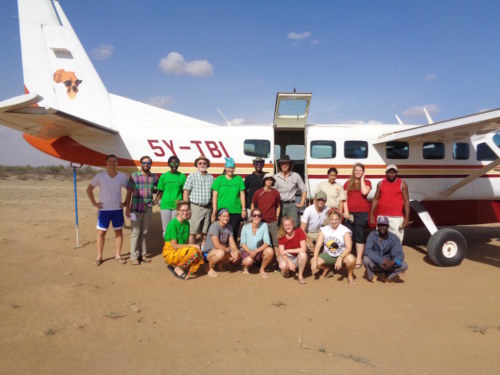
Safe travels Dr. Henkes and Dr. Davis!
In the previous module, the students learned about the Ecology of the Turkana Basin, focusing on living organisms that thrive throughout this region today. Throughout the Geology module, they learned about what types of environments these animals may have existed in millions of years ago. Now, as we move forward to our next module, Vertebrate Paleontology, the students will get an introduction to what these past animals may have looked like! Keep checking in as we begin to paint a better picture of what really happened millions of years ago…





